Business
Canada’s risky and misguided bet on EV battery manufacturing

From the Macdonald Laurier Institute
By Tom McCaffrey and Denaige McDonnell for Inside Policy
By investing $52.5 billion in a handful of foreign-controlled companies, the government has failed to create a sustainable, long-term economic advantage. Instead of fostering innovation and building a robust, homegrown supply chain, Canada has committed itself to an outdated model of industrial policy that relies on foreign entities and low-value manufacturing jobs.
Two years ago, Canada’s minister of natural resources urged Canadians “to fully seize” the economic opportunity presented by the country’s abundant critical minerals.
“We must ensure that value is added to the entire supply chain, including exploration, extraction, intermediate processing, advanced manufacturing, and recycling,” Jonathan Wilkinson stated. “We must create the necessary conditions for Canadian companies to grow, scale-up, and expand globally in markets that depend on critical minerals.”
Two years later, the Canadian government has gone all-in with a $52.5 billion dollar bet on EV battery manufacturing in Ontario and Quebec. The decision goes against the recommendations of industry specialists and the government’s own departments responsible for strategic development who advised officials to go slow, steady, and think full supply chain development when targeting incentives.
Why didn’t the politicians listen?
Ottawa’s risky bet on EV battery manufacturing
By 2033, the Parliamentary Budget Officer (PBO) estimates three recent Canadian Government EV battery manufacturing subsidies will cost the country a total $37.7 billion dollars. The Northvolt, Volkswagen, Stellantis-LGES manufacturing facilities are estimated to take 15 years to pay back Canadian taxpayers.
The repayment estimate is 6 years longer than the government originally estimated because the PBO has now used the manufacturers’ production rate estimations, a more conservative number, than the originally used full production rates. In total, the national investment across the full value chain of EV battery manufacturing equates to $52.5 billion into just 13 companies.
The Canadian government is betting big on EVs, but not by investing in innovation, intellectual property, or Canadian technology. It is betting the farm on foreign entities delivering 8,500 manufacturing jobs. Capital investment for the purpose of growth in labour productivity isn’t a new strategy and it can be effective, but at $4 million per job the likelihood of return on investment is low.
Could the Bet Pay Off?
The global EV battery market is expected to surge over the next 10 years from US$132.6 billion in 2023 to US$508.8 by 2033. So far, growth has been slower than expected, and some major players, like Tesla, will be challenged to meet their sales volumes from last year according to analysts – but basing an opinion on a single year of car sales is not wise.
The truth is car manufacturing in Canada is important to our GDP ($14.6 billion) and to jobs (125,000). It is also true that Canada has lost 50 per cent of its market share in manufacturing of cars ($8 billion in 2000 to $4 billion in 2022), but it has maintained it market share in motor vehicle parts ($9 billion).
Canada appears to be betting that it can maintain it’s position in the car automotive industry rather than cementing its place in the battery metals and manufacturing value chain. But is this wager wise?
Sustainable policy development
Governments can encourage economic and industrial development in several ways. Policy-makers can set efficient regulations and approval mechanisms; create frameworks that build a bridge between government and the private sector; support the development of skilled labour and innovation ecosystems; enable direct collaboration and procurement mechanisms between industry, academia, innovation ecosystems, and government; and share a clear vision and pathway for industrial growth.
Governments can also use subsidies and tax credits to create market share, but there is growing concern that using these methods to create or protect markets will cause more harm than opportunity in developing countries. These kinds of investments risk triggering international protectionism and geopolitical trade-offs as nations turn inward rather than collaborating for development.
What’s needed is a sustainable policy approach – one that influences and benefits the largest subset of market outcomes, including start-up development, foreign direct investment, technology development, technology adoption, investment attraction, the creation of circular economy value chains, and more.
Ottawa’s misguided approach to economic investment
In the EV world, a fully integrated supply chain that includes mining, chemical processing, battery production, and recycling is critical. The battery value chain road map published by Innovation, Science and Economic Development (ISED) Canada, and the Canadian Critical Minerals Strategy published by Natural Resources Canada (NRC) both call for government to develop the full supply chain.
In 2021, a standing committee advised how best to develop the full supply chain. That same year Clean Energy Canada wrote a report on how Canada could build the domestic battery industry across the country, and in 2022 another full suite of associations including the Battery Metals Association, Energy Futures Lab, Transition Accelerator, and Accelerate ZEV developed a roadmap to develop Canada’s battery value chain.
The Canadian industrial policies being used to create the EV supply chain are a mix of production subsidies, investment tax credits, foregone corporate income tax revenue, construction capital expenses, and other monetary supports. Though large, the $52.5 billion investment ignores key aspects of the upstream supply chain (mining, refining, etc.) that would allow us to reap full value from EV battery production. Worse, it comes at a time when automakers are pulling back from EV investments due to lower than expected demands, making the investment increasingly risky given changing market conditions.
By flying in the face of the very industries it supports and specialists it employs, it raises the question: why is Canadian government failing to follow its own strategy? Why choose to support an undeveloped strategy that banks on foreign investment and manufacturing jobs when experts across Canada’s supply chain, and two government departments, had a fulsome and balanced approach to supply chain development? Why shun a balanced approach to government investment focused on building out the entire supply chain?
Where Canada continues to go astray
Canada’s investment strategies have long been plagued by short-term thinking, favouring politically motivated quick wins over sustainable, long-term value creation. The government’s $52.5 billion bet on EV battery manufacturing is a prime example—subsidizing foreign companies while neglecting the development of critical upstream supply chains and domestic innovation. This approach leaves Canada reliant on international markets for critical materials, with little to show in terms of intellectual property or R&D growth.
By ignoring expert advice and focusing on politically strategic regions, Canada misses opportunities to build fully integrated industries across the country, ultimately failing to support homegrown solutions that could foster long-term economic resilience. Instead, Canada continues to prioritize high-risk, low-return investments, with little consideration for the foundational elements needed for a competitive, innovative economy.
Research on industrial policy shows countries are better served when governments focus on delivering well-designed policies aimed at improving general business environments than attempting to artificially create new markets. This is why industrial policies went out of vogue more than two decades ago.
It raises the question – are there examples of successful government interventions that seeded new sectors?
How the Asia-Pacific region cornered the semiconductor market
In the 1980s both the South Korea and Taiwanese governments made strategic early investments in companies that were well positioned to accelerate growth of the semiconductor sector. Today, the Asia-Pacific region is dominating the global market share of what has become a US$620 billion industry. Both South Korea and Taiwan were investing in the semiconductor industry in the 1960s. From a policy perspective, the two countries took similar approaches and focused their state-directed capital allocations to companies like Samsung LG and the Taiwan Semiconductor Manufacturing Company (TSMC). Through strong government support, both countries created technology institutes, centres for research and development, infrastructure and tax incentives, tax holidays, and interest-free loans.
Those investments helped to seed highly successful sectors in each country. Both countries continue to invest tax dollars back into the sector to help maintain the competitive advantages they helped to foster. South Korea’s semiconductor industry received a $US19 billion show of support from its government earlier this year to create a comprehensive support program spanning financial, research and development, and infrastructure support. The investment is part of a decades long commitment to the semiconductor industry which now accounts for nearly 20 per cent of total exports and plays a leading role in the South Korean economy. In Taiwan, the semiconductor sector is a powerhouse that accounts for 15 per cent of the national GDP and ranks number one globally for wafer foundry and packaging and testing, and number two for integrated circuit (IC) design.
These successes were largely enabled by government-controlled economies and early, and ongoing support to industry. This support did not waiver for decades. It is unlikely that Canada will be able to maintain this level of stability and government focus.
Other factors like access to cheap labour, willingness to specialize, commitment to product quality, and streamlined manufacturing played an important role.
Policy Challenges: Economic and Political Complexities
The challenge of creating successful industrial policy is that it is complex, long-term, has uncertain benefits, and requires government departments to have deep industry expertise. Experts worry that the current federal government simply isn’t up to the task.
In 2023, more than 2,500 new industrial policies were introduced globally, and more than 70 per cent were subsidies, tariffs, or import/export restrictions. These policies create trade distortion more often than they lead to market creation. Trade distortion can unfairly tilt the playing field in favour of domestic industries, often at the expense of foreign competitors.
With Canada’s recent industrial policy on EV battery manufacturing, we are choosing to distort our own economy.
Industrial policies strain global trade and economic relations. Such policies can have wide-ranging effects on both the implementing country and the global economy. They also appear protectionist even to allied nations.
How can Canada get it right?
Many of Canada’s mature sectors have enjoyed government support or protection at some point in our nation’s history. Past Canadian governments have protected the industries of their time, be it agriculture, steel manufacturing, pulp and paper, aerospace, and even defence.
There are recent examples of small sums of government dollars creating big wins for Canada’s homegrown innovation and sustainability economy.
At the provincial level, one organization that stands out is Emissions Reduction Alberta (ERA), an arms-length provincial organization that has weather several changes in government in its 15 years. ERA uses Technology Innovation and Emissions Reduction dollars to invest in late-stage sustainable technology. To date, the organization has invested almost $1 billion dollars into 277 technologies at a ratio of 8 industry dollars to 1 ERA dollar.
Federally, Prairies Economic Development Canada (PrairiesCan) is an example of a highly innovative approach to economic development. It has invested millions of dollars in repayable interest-free loans and regional innovation ecosystem supports. Ecosystem supports include accelerators and incubators that have exponentially increased the success of start ups and mature firms alike.
PrairiesCan and ERA operate on annual budgets of $300 million and $50–200 million, respectively. These dollars employ various types of expertise and invest across large swaths of the mature and new economy. They look across hundreds of organizations, understand the regional context, varying business dynamics and make strategic investments.
If government persists in committing tax dollars to the growth of the economy, then it should draw inspiration from these kinds of organizations.
Do Governments Make Effective Market Makers?
Canadians are rightly skeptical about Ottawa’s $52.5 billion bet on EV battery manufacturing.
Ottawa is rolling the dice that it will make Canada a leader in battery supply chains. It’s one of the largest industrial policy bets we have seen in our lifetimes. However, industrial policy analysts are warning about the risk of misallocation of funds.
Expert critics say Canada’s economy is too reliant on government-driven innovation policies. These researchers believe that competition creates markets, and that the government should commit to focusing on reducing policy and regulatory barriers. Many still believe in the capitalist ethos – that fostering a cultural and economic environment that naturally supports risk-taking and competition is the best route to success. The same people would note that the natural process of business turnover is essential for innovation and growth.
Conclusion
Canada’s current strategy of picking winners through massive, targeted subsidies is not just risky – it’s short-sighted. By investing $52.5 billion in a handful of foreign-controlled companies, the government has failed to create a sustainable, long-term economic advantage. Instead of fostering innovation and building a robust, homegrown supply chain, Canada has committed itself to an outdated model of industrial policy that relies on foreign entities and low-value manufacturing jobs. This approach ignores the foundational elements that drive true competitiveness – innovation, R&D, and full value chain development.
What Canada needs is a fundamental shift in its investment strategy. Instead of betting the farm on politically motivated, high-risk subsidies, the government should focus on strengthening ecosystems that support innovation, entrepreneurship, and domestic industry. Investments should be directed at building a fully integrated supply chain that includes mining, refining, and manufacturing, while supporting Canadian companies that will keep intellectual property and jobs at home.
If Canada continues down the current path, it risks becoming a player in someone else’s game, perpetually reliant on foreign companies and global markets. The country should seize this moment to redefine its complete industrial strategy, making bold investments in innovation and infrastructure that can secure economic resilience for generations to come. Without this shift, Canada’s $52.5 billion bet may very well be remembered as one of the biggest missed opportunities in modern economic history.
Tom McCaffery, M.B.A., is the CEO and managing director of Two River Advisory and former executive director of policy and engagement for Emissions Reduction Alberta.
Denaige McDonnell, Ph.D., is an accomplished business management strategist and CEO of People Risk Management, specializing in organizational systems, culture, and psychological safety.
Business
Quebecers want feds to focus on illegal gun smuggling not gun confiscation

The Canadian Taxpayers Federation released new Leger polling showing that half of Quebecers say the most effective way to reduce gun crime is to crack down on illegal gun smuggling from the United States, not a federal gun ban and confiscation.
“Law enforcement experts say the best way to make Canada safer is to stop illegal gun smuggling and Quebecers say exactly the same thing,” said Nicolas Gagnon, CTF Quebec Director. “It makes no sense to pour hundreds of millions into a confiscation that only takes guns from lawfully licensed gun owners.”
In 2020, the federal government launched its policy to confiscate thousands of so-called “assault-style” firearms from licensed gun owners. Ottawa recently announced a pilot project in Cape Breton to start taking firearms from individual owners.
The Leger poll asked Quebecers what they think is the most effective way to reduce gun crime. Results of the poll show:
- 51 per cent say introducing tougher measures to stop the illegal smuggling of guns into Canada from the United States
- 37 per cent say banning the sale and ownership of many different makes and models of guns along with a government buyback program
- Six per cent say neither of these options
- Seven per cent do not know
The results of the polls arrived as recorded remarks from Public Safety Minister Gary Anandasangaree made headlines in September.
In a leaked audio recording, the minister suggested the confiscation program is being pushed in part because of voters in Quebec, while also expressing doubt that local police services have the resources to enforce it.
Police organizations have long warned Ottawa’s confiscation program is misguided. The RCMP union says it “diverts extremely important personnel, resources, and funding away from addressing the more immediate and growing threat of criminal use of illegal firearms.”
The program was first estimated to cost $200 million. Just providing compensation for the banned guns, not including administrative costs, could cost up to $756 million, according to the Parliamentary Budget Officer.
Premiers of Alberta and Saskatchewan have both publicly said that they would not cooperate with Ottawa’s gun ban. Premier François Legault has stayed silent on this issue.
“Quebecers have been clear: the real problem is illegal gun smuggling, not law-abiding firearms owners,” said Gagnon. “The police have also made it clear the gun confiscation will waste money that could be used to stop criminals from committing gun crimes.
“Legault needs to stand up for Quebec taxpayers and refuse to help implement Ottawa’s costly and ineffective confiscation scheme. The federal government needs to drop this plan and focus its resources on intercepting illegal guns at the border: that’s how you actually make communities safer.”
Business
Emission regulations harm Canadians in exchange for no environmental benefit

From the Fraser Institute
By Julio Mejía and Elmira Aliakbari
The PBO estimates that the CFR will decrease Canada’s economic output by up to 0.3 per cent—or approximately $9.0 billion—in 2030. For context, that’s more than the entire output of Prince Edward Island in 2024, so the effects are roughly equivalent to wiping out the economy of a whole province.
The Carney government recently announced changes to the Clean Fuel Regulations (CFR), signalling stricter carbon content rules for gasoline and diesel—though few details were provided. While the prime minister expressed confidence that the changes will strengthen the Canadian economy, in reality, the CFR is designed to increase fuel prices in exchange for negligible environmental benefits. If the government is serious about prioritizing the wellbeing of Canadians, it shouldn’t tinker with the CFR—it should eliminate it.
The CFR, which came into effect in July 2023, aims to reduce greenhouse gas (GHG) emissions by requiring a gradual reduction in the carbon content of gasoline and diesel. By 2030, fuels must contain 15 per cent fewer GHG per unit of energy than in 2016. Those who don’t meet the target must buy compliance credits, which raises their costs. Ultimately, these costs are all passed on to Canadians at the pump.
According to a recent study by the Parliamentary Budget Officer (PBO), the CFR is expected to increase fuel prices by up to 17 cents per litre for gasoline and 16 cents for diesel by 2030. These costs will be added on top of already high, policy-driven fuel costs. In 2023, for example, the average price of gasoline in Canada was 157.3 Canadian cents per litre, compared to just 129.4 cents per litre in the United States—a 21 per cent difference, mainly the result of fuel taxes in Canada.
As fuel prices rise due to the CFR, the costs of running tractors, powering machinery, and producing and transporting goods and services will all increase, setting off ripple effects across our economy. The PBO estimates that the CFR will decrease Canada’s economic output by up to 0.3 per cent—or approximately $9.0 billion—in 2030. For context, that’s more than the entire output of Prince Edward Island in 2024, so the effects are roughly equivalent to wiping out the economy of a whole province.
Of course, increases in fuel prices also mean more pressure to household budgets. The PBO estimates that in 2030, the average Canadian household will incur $573 in additional costs because of the changes to the CFR, and lower-income households will bear a disproportionately larger burden because they spend more of their budget on energy.
The policy’s uneven impact across provinces is particularly significant for lower-income regions. For example, households in Nova Scotia and P.E.I.—two of the provinces with the lowest median household incomes—are expected to bear average annual costs of $635 and $569, respectively. In contrast, families in Ontario and British Columbia—two of the provinces with higher median household incomes—will pay less, $495 and $384 per year, respectively. Simply put, the CFR imposes more costs on those who make less.
To make matters worse, the expected environmental benefits of the CFR are negligible. Even if it delivers its full projected reduction of 26 million tonnes of GHG emissions by 2030, that represents only “two weeks of greenhouse gas emissions from the Canadian economy,” according to the federal government.
Given that GHG emissions cross all borders regardless of where they originate, in a broader perspective, that reduction represents just 0.04 per cent of projected global emissions by 2030. So, Canadians are being asked to pay a material price for a measure that will have virtually no environmental impact.
Toughening regulations on carbon content for gas and diesel won’t benefit Canadians, in fact, it will do the opposite. The CFR places a real financial burden on Canadian households while delivering no meaningful environmental benefit. When a policy’s costs vastly outweigh its benefits, the answer isn’t to adjust it, it’s to scrap it.

Julio Mejía
-

 Alberta2 days ago
Alberta2 days agoClick here to help choose Alberta’s new licence plate design
-
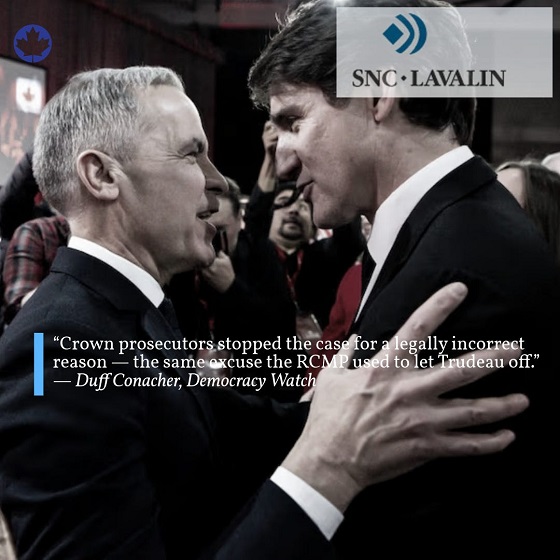
 National2 days ago
National2 days agoDemocracy Watch Renews Push for Independent Prosecutor in SNC-Lavalin Case
-

 Business2 days ago
Business2 days agoOver two thirds of Canadians say Ottawa should reduce size of federal bureaucracy
-
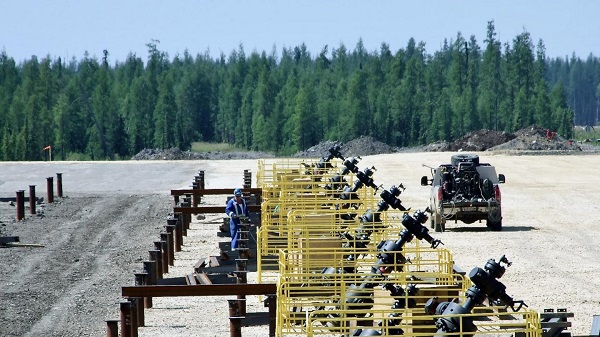
 Alberta1 day ago
Alberta1 day agoBusting five myths about the Alberta oil sands
-

 Frontier Centre for Public Policy1 day ago
Frontier Centre for Public Policy1 day agoOttawa Should Think Twice Before Taxing Churches
-
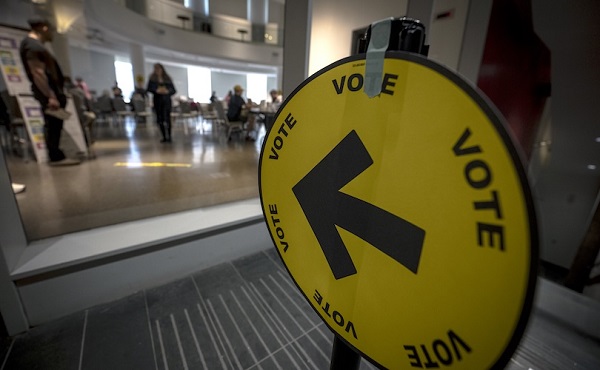
 City of Red Deer1 day ago
City of Red Deer1 day agoPlan Ahead: Voting May Take a Little Longer This Election Day
-
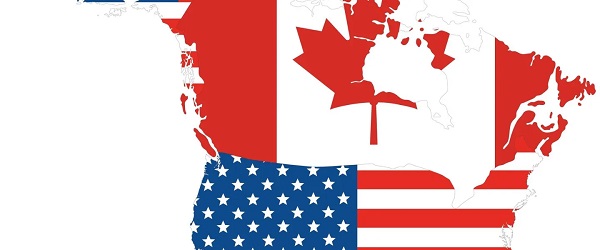
 Business1 day ago
Business1 day agoUS government buys stakes in two Canadian mining companies
-
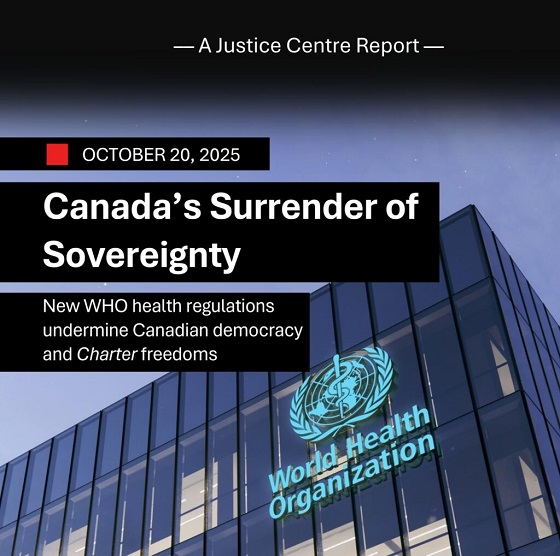
 Health22 hours ago
Health22 hours agoNew report warns WHO health rules erode Canada’s democracy and Charter rights







